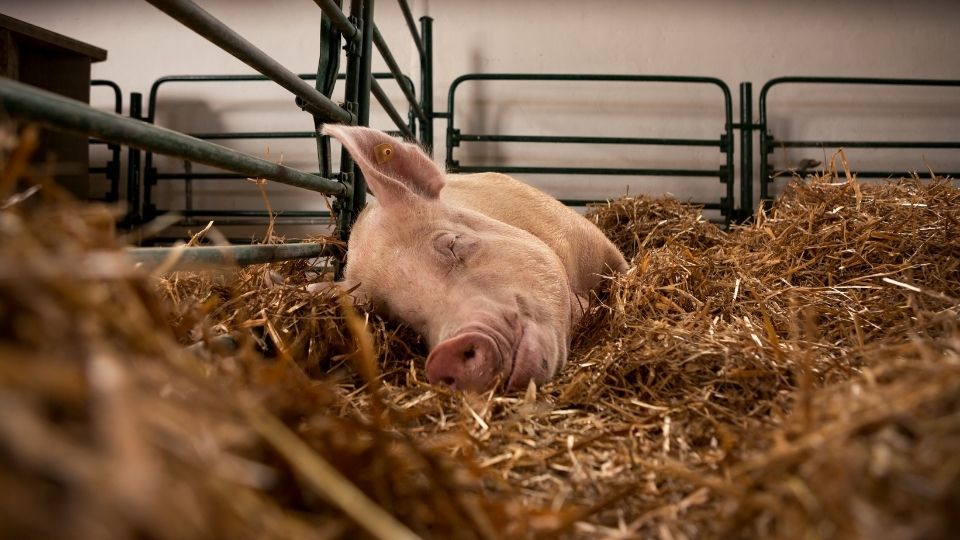

Scientists in the United States have utilized new technology to restore numerous basic functions in over 100 pigs that had been dead for more than an hour, thereby dismantling many notions around death. The study could lead to a discovery of a greater supply of donor organs.
Three years ago, a remarkable experiment restored some brain functions to decapitated pigs at Yale University. Anesthetized animals have been revived and killed by an artificial heart attack in the most recent advancement of the research team.
In a method known as OrganEx, 13 substances that enhance cellular health and reduce inflammation were pumped to restore life in dead pigs. Several organs regained their capacity to contract once the virus had been eliminated from the body, including the liver, kidneys, brain, and heart.
According to Nenad Sestan, the project head, a major accomplishment of the team’s work was reestablishing blood flow throughout the body. This discovery is truly remarkable for Sam Parnia, director of critical care and resuscitation research at New York University medical school!
According to Parnia, this approach shows that cells in mammalian organs, including the brain, do not die for many hours after death. Because this study reveals that our social convention considering death as a classic black and white end is not scientifically valid, he said, death is a treatable and reversible biological process, according to scientific research.
A state of ischemia occurs when the heart stops beating, causing organs to enlarge and blood arteries to collapse. OrganEx treatment appeared to keep the deceased pigs’ tissues alive, unlike those of control animals with a more conventional procedure known as Ecmo, in which blood and oxygen circulated throughout the body.
When examining the samples under a microscope, Yale’s Zvonimir Vrselja noted that it was difficult to discern the difference between a healthy organ and one treated with OrganEx technology after death.
Astonishingly, however, Sestan’s team of researchers noticed numerous involuntary and spontaneous muscle contractions in the anesthetic animals’ head and neck portions. Some motor functions were still intact based on these motions.
Animal care and ethics experts from the university were involved in the experiment’s design. After six hours, the OrganEx perfusion had to be stopped. As a result, scientists don’t know how long the pigs’ bodies would have remained alive if the treatment had continued without interruption.
Instead of preserving entire human bodies for transplantation, the Yale researchers predict that the first human use for OrganEx will be to preserve specific organs in good working order.
Bioethics expert Stephen Latham believes that this new technique has a wide range of possible applications. However, future research must be closely monitored, particularly brain perfusion.
Sestan stated that the team was discussing with its advisors the next stages, which are likely to include more pig trials to analyze more precisely if the organs of the pigs functioned well enough after OrganEx treatment to be utilized in transplantations.
Is this restoration of life in dead pigs mean we are ready to blow life into the dead already? Latham mentions that this technology is far from ready for human implementation, requiring much more precision, which is currently funded by the US National Institutes of Health and Schmidt Futures.
Dear Reader,
First, thank you for your precious time reading the stories (without paywalls) I publish on Startups to Enterprises covering the EU, China, the US, and India. Second, I request you to contribute financially (any amount) to help me sustain this as an independent digital business news media.
If I receive a request for a sponsored post, I ensure I see merit that is meaningful for erudite and informed readers like you. In the bargain, I lose out on sponsorships wherein I need funds to sustain this effort. Your contribution helps me stay afloat.
Please note that your contribution is treated as revenue generated and not a donation; hence, there are no 80G or other donation certificates. In fact, as I am eligible to pay for the revenue generated, I will pay taxes on the same.
You deserve to know that I abide by journalistic ethics and practices to ensure I tell the stories as is, unbiased. You can follow us on Facebook, Linkedin, and Twitter, bookmark us on Google News, and finally, PayPal us here.
Founding Editor
Linda Ashok
